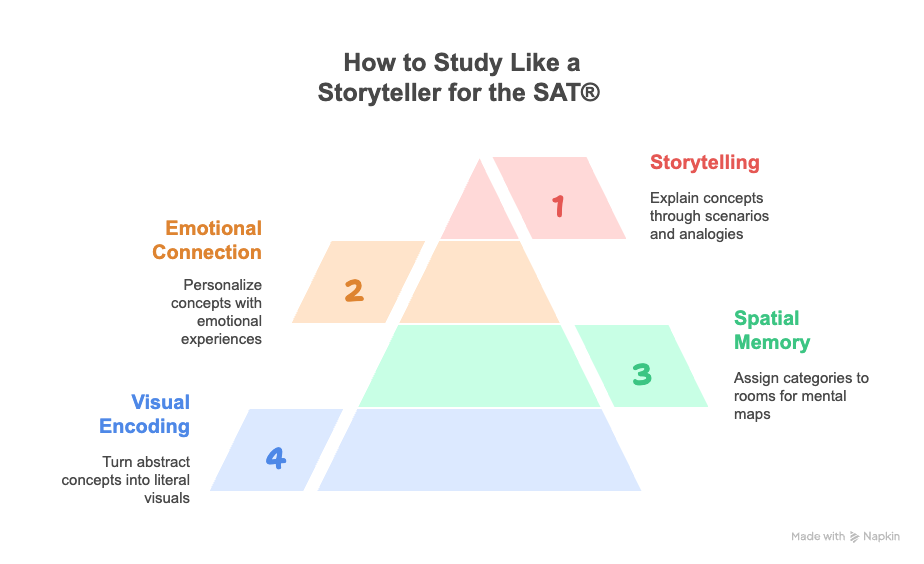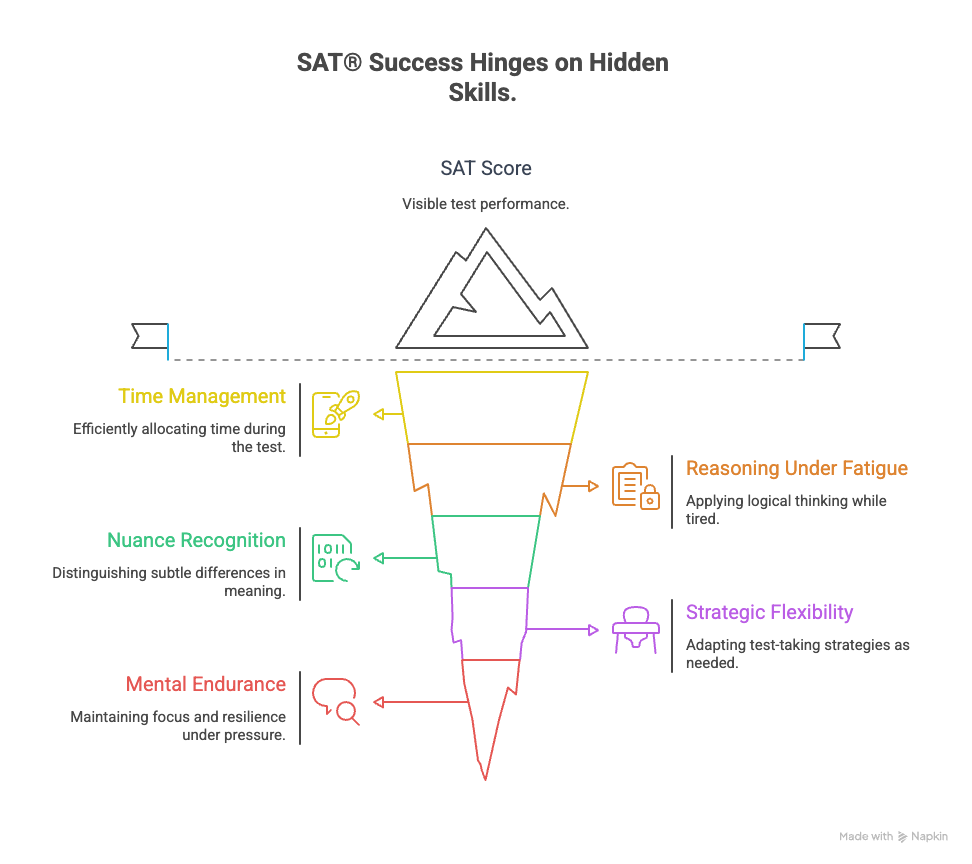You've probably done this: Read an SAT® passage three times. Highlight it. Say it aloud. Then completely forget it under pressure.
That’s not because you didn’t try. It’s because your brain doesn’t store information based on volume. It stores information based on meaning.
Memory isn’t just about how many times you repeat something. It’s about how deeply it lands and what structure it’s tied to. If you want to retain what matters for your SAT® prep, you need to stop cramming and start encoding.
Let’s look at how memory actually works and how it connects to effective SAT® study strategies.
Repetition Isn’t Retention for Your SAT® Study Strategies
Repetition can feel productive. It creates the illusion of fluency. But under SAT® test pressure, your brain doesn’t search for what feels familiar; it searches for what’s anchored.
Repetition increases exposure.
Storytelling increases retrieval. This is a fundamental concept for SAT® and mental resilience.
The Science Behind What Sticks for SAT® Prep
1. Memory Consolidation Is Emotional
According to Larry McGaugh (2000), memory consolidation, the process of moving information into long-term storage, is strengthened by emotional arousal. You don’t remember the most repeated event. You remember the one that meant something. This principle is key for deep learning in SAT® prep.
2. Memory Is Spatial (Method of Loci)
One of the oldest memory techniques, used by orators in ancient Greece, is the method of loci, or memory palace. It works because your brain is spatially wired. It recalls things by where they live, not just what they are. This is a powerful SAT® study strategy.
3. Memory Loves Narrative
A disconnected fact is hard to retrieve. A story, even a simple one, activates structure: cause, effect, emotion, image. Narrative creates hooks. Hooks make recall easier during intense SAT® prep.
You Already Know This for Your SAT® Study Strategies, You Just Forgot
Think about it:
- You don’t remember page numbers from old textbooks. You remember the teacher who told the story about the bee in the lab.
- You don’t remember formula sheets. You remember how a friend explained since using a basketball arc.
That’s not a coincidence. That’s how your brain actually wants to store information for better SAT® prep and mental resilience.
How to Study Like a Storyteller for the SAT®
You don’t need to become a creative writer. You just need to give your brain structure and context for your SAT® study strategies. Here’s how:
1. Turn Abstract Into Image
If you’re memorizing a math rule or grammar rule for the SAT®, build a picture. Not a metaphor. A literal visual.
Example: Instead of just thinking: "Parallel lines never meet."
Think: Two train tracks in a snowstorm that never cross, no matter how far they stretch.
That’s not just memorization for your SAT® prep; it’s encoding.
2. Build a Mental Map of Where It Lives
Use location. That’s how your brain likes to sort. This is a powerful SAT® study strategy.
Try this: Assign SAT® categories to rooms in your house:
- Kitchen = algebra
- Bedroom = reading
- Staircase = grammar transitions
When you review for the SAT®, mentally walk through the house. Place concepts in specific spaces. This spatial memory is easier to access under pressure, boosting your SAT® and mental resilience.
3. Attach Emotion (Even Mild)
Memory sharpens when something feels even slightly personal.
Try this: Instead of just saying: "Ambiguity equals unclear reference."
Say: "When my teacher said ‘he’ but no one knew who he was, that’s ambiguity."
The moment becomes memorable, not just informational, for your SAT® prep.
4. Teach It Like a Story, Not a Fact Dump
When you explain an SAT® concept, don’t just list points. Wrap them in a scenario, even a silly one.
Try this: Explaining subject-verb agreement for the SAT®? Tell it as a courtroom scene. The subject is the client. The verb is the lawyer. They have to agree, or the sentence gets thrown out.
It’s not about entertainment. It’s about pattern recognition through analogy, enhancing your SAT® study strategies.






